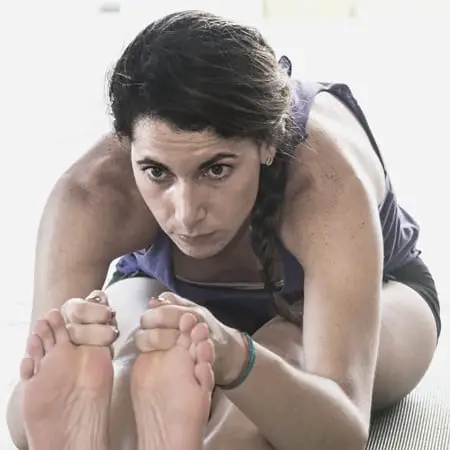Achieving inner peace while trying your best to reach inner potential has long been aided by healthy practices and fitness exercises such as yoga. Over the past few years, we’ve seen many people deviating from traditional yoga to hot yoga, a popular type of exercise done in a warmer room.
The main difference between regular and hot yoga is the room temperature in which they’re performed. Traditional yoga is done under ordinary room temperature, while hot yoga is done under higher temperatures. In hot yoga, you can set the room to any temperature as long as it’s above normal.
You’ve probably begun taking hot yoga sessions, wondering what makes it different from regular yoga. While these two exercises work to improve your overall health, it’s good to point out the significant differences before signing up for classes. Today’s article addresses the main difference between hot and regular yoga and the benefits of hot yoga.
The Ideal Conditions for Hot Yoga Vs. Regular Yoga
One of the significant differences in most styles of yoga is the environment. Experts will always recommend the best environment, depending on your goals and health condition. They’ll choose the best poses, temperature, and humidity to push your endurance to its limits.
Unfortunately, not everyone has an instructor to tell them what to do. So in case, you’re on your own, what’s the ideal temperature and humidity?
Best Temperature for Your Workout Environment

Most hot yoga sessions are best performed with room temperatures that range from 80 °F to 100 °F (27 °C to 38 °C) in a session that typically lasts for 90 minutes. On the other hand, traditional yoga sessions take place at an ideal room temperature of about 20°C (68°F).
However, there’s a slight difference between Hot yoga and Bikram yoga. People often mistake these two types of yoga because they’re both done in higher temperatures. Hot yoga doesn’t limit you to a specific temperature, as long as it’s above the average room temperature. However, Bikram yoga is an example of hot yoga has the room temperature around +40.5 deg C (105 deg F).
Best Humidity for Your Workout Environment
Although there are not many restrictions on the humidity levels, both regular and hot yoga should work well in a 40% relative humidity environment. This temperature is the optimum humidity for healthy sweating to maximize the benefits.
Always ask about the studio’s conditions before enrolling in yoga classes. Doing this will help you keep track of your health condition, intolerance, or anything that might limit your yoga classes’ eligibility.
Does Hot Yoga Burn More Calories Than Regular Yoga?
Today, yoga with the heat has become very popular not only as an exercise but as a stress reliever and flexibility enhancer. Hot yoga can help you burn more calories than regular yoga. Yoga is a practice well known for helping people lose weight by burning excess calories.
Hot yoga stimulates your body to perform workouts better than regular yoga. It flexes your muscles better than traditional yoga, meaning your body responds faster to the conditions necessary for successful weight loss. After every session, you will sweat, meaning your muscle activity and metabolism are enhanced.
Higher temperature tells your body to work harder to bring down the heat. It increases your heart rate and metabolic activity. In this condition, your muscles become more flexible to hold a pose for an extended time. You breathe much deeper as you try to focus on the stretch and keep it as long as you can. The longer you hold these poses and breathe deeper, the better the circulation in your body.
Is Hot Yoga Good for You?

Considering all its benefits, heated yoga is good for everyone looking for quality time. Hot yoga is a great way to enjoy the benefits of regular yoga and much more. It would help if you considered signing up for a session to taste what people do in there. Scientists are still studying yoga to understand how it affects the human body.
You’re always expected to take precautions. Apart from higher temperatures that may be uncomfortable for some people, this type yoga can cause heat-related complications and discomfort.
You must first consult your doctor before attempting this exciting journey, especially if you’re pregnant, heat intolerant, suffering from heart diseases, or having a history of stroke. Make sure your doctor knows and approves it.
Some Benefits Associated With Hot Yoga
Both traditional and hot yoga has a similar set of benefits, but some people underestimate hot yoga benefits. Since it’s an exercise done at higher temperatures, the overall effect tends to be more intense than your regular yoga workout. Below are the main benefits of hot yoga:
Manages Your Weight
Yoga is one of the natural ways to lose weight. Traditional yoga can help a 160-pound (73-kg) person to burn as much as 183 calories. Hot yoga can help you burn more calories than traditional yoga.
According to experiments carried out at Colorado State University, men can burn as much as 460 calories in a 90-minute session in hot yoga (Bikram yoga) compared to women who burned 330 calories.
Turning up the heat means higher chances of burning more calories and better weight loss. However, you have to mind your diet to maximize the result.
Reduces the Symptoms of Depression
Generally, yoga is recommended by therapists for people with depression to achieve a relaxed mood. Many people opt for yoga sessions as a way of dealing with depression. Besides, it has the potential to improve overall health and self-efficacy. Self-efficacy is the belief that one can have control over their behavior and their social environment.
Relieves Stress
For years, people have turned to yoga as a stress reliever. Hot yoga can significantly reduce the stress levels of participants. Modern adults (and teenagers) are stressed continuously by almost every aspect of life, including family, jobs, and finances.
By turning to hot yoga, you’re reducing your stress levels to a manageable load. It’s only a matter of time before you get control over your life.
Nourishes Skin
Since yoga is an exercise, you’ll probably sweat a lot. Sweating eliminates toxins from your body and flushes your sweat pores clean. It also keeps your skin cells healthy and nourished. Sweating will improve circulation and bring oxygen and blood rich in nutrients to the skin cells. This mechanism will nourish the skin from inside.
Improves Flexibility
Hot yoga can improve flexibility because stretching after warming up your muscles is far safer than trying to stretch cold muscles. Therefore, an environment such as hot yoga can simplify and make yoga pose easier and more effective.
The heat will improve your ability to stretch further and attain a greater range of motion. After several hot yoga sessions, you may achieve greater flexibility, particularly in the low back region, hamstring, and around the shoulders.
Good for Your Heart
Different yoga poses in a high-temperature room can improve your cardiovascular system. High temperatures will give a challenging workout to your lungs, heart, and muscles, compared to the same poses in lower temperatures.
One hot yoga session will give your heart a pumping rate equivalent to taking a brisk walk of about 3.5 mph (5.6 km/hr). Hot yoga revs up your metabolism and respiration, something you will not get in the colder yoga.
Conclusion
The only thing distinguishing between hot yoga and regular yoga is the working temperature. Although most people are familiar with traditional yoga, turning up the heat a little bit could make your workouts more fun and healthier too. It doesn’t matter your age, gender, or social status. Yoga is an exercise for all, and since you don’t need expensive equipment for that, consider getting started right away. There are more benefits to hot yoga.








